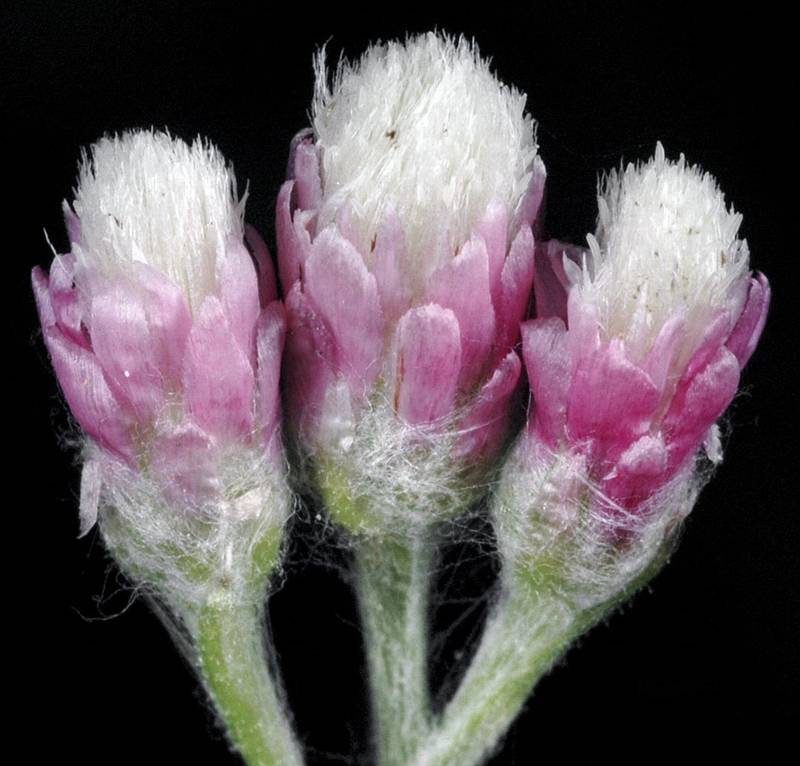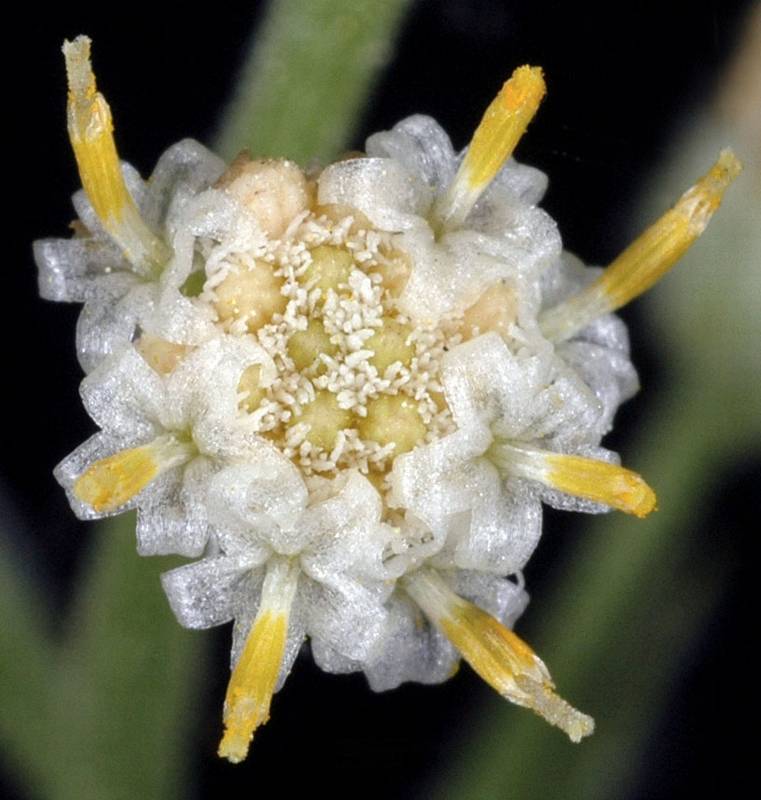Antennaria rosea
Antennaria racemosa
Hooker's pussytoes, raceme pussytoes
Leaves 1-nerved;
upper surface of the leaves covered with silvery-white hairs;
basal leaves spatulate or oblanceolate with a wedge-shaped base;
cauline leaves linear, alternate.
Basal leaves short-petiolate with elliptic to elliptic-ovate blade1.5-8 cm. long and 1- 5 cm. wide, persistently white-woolly beneath, green and glabrous above;
cauline leaves narrower, sessile;
stems strongly glandular in the upper portion.
Heads several in a sub-capitate cyme; pistillate involucres 4-10 mm. long; scarious portion of the involucre bracts white, straw-colored or light yellow.
Heads on slender peduncles in a narrow, raceme-like inflorescence; staminate involucres 4-5 mm. high, but wider than the pistillate; pistillate 6-8 mm. high, strongly imbricate, the inner bracts narrow and elongate, pale greenish below, colorless and transparent to pale brownish above.
Achene.
Achene terete
Antennaria rosea
Antennaria racemosa
- Local floras:
BC,
CA,
OR,
WA
- Local Web sites:
CalFlora,
CalPhotos,
Flora NW,
PNW Herbaria,
Turner Photog.
WildflowerSearch
iNaturalist (observations)
USDA Plants Database
- LBJ Wildflower Center
- SEINet
- Plants of the World Online
- Encyclopedia of Life
- Wikipedia
- Google Image Search



